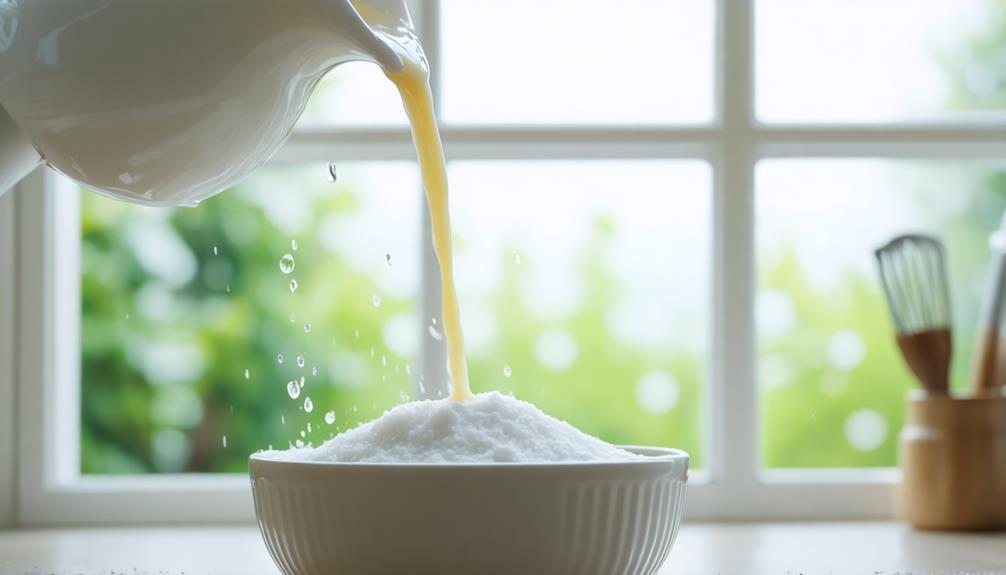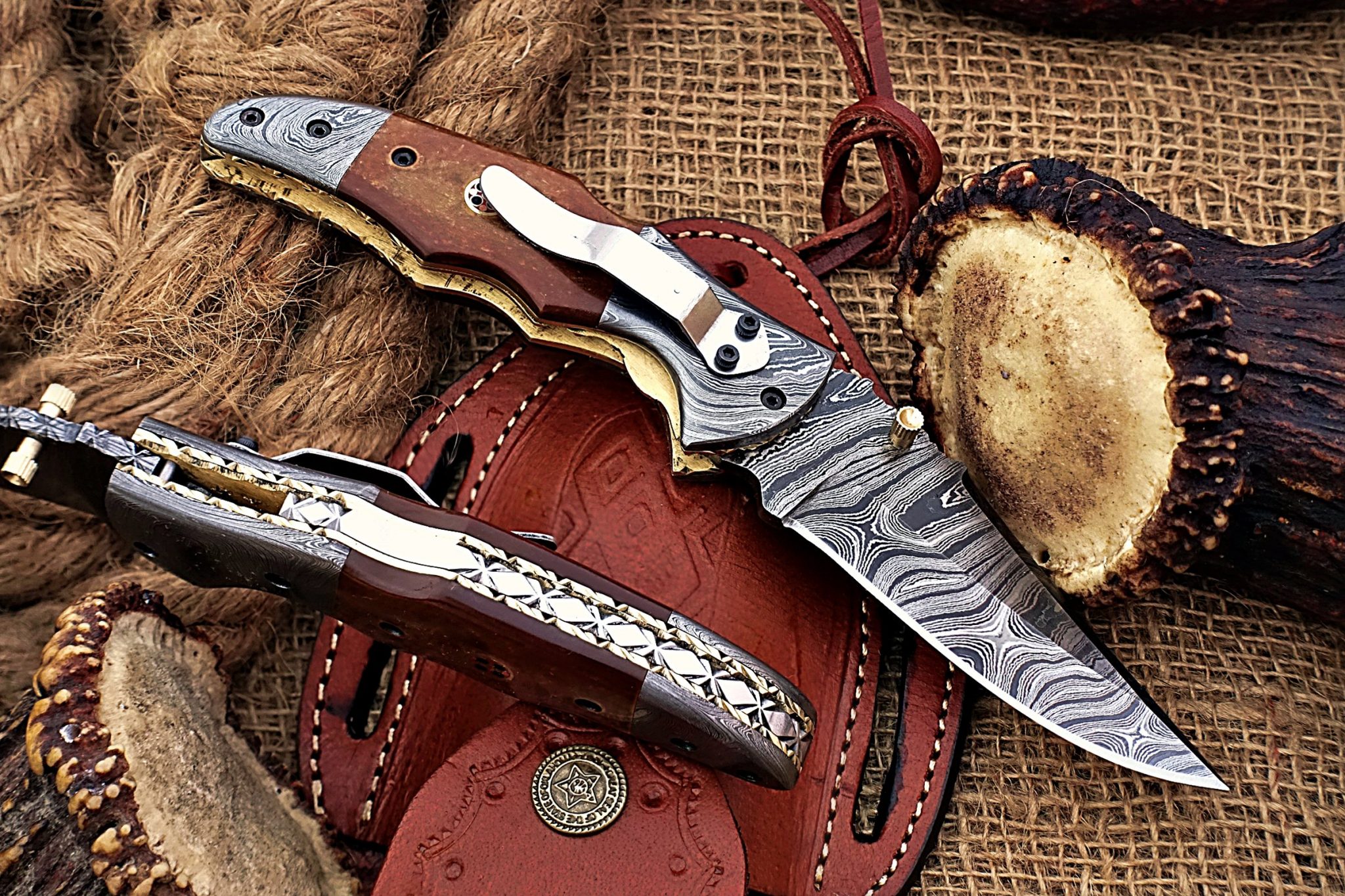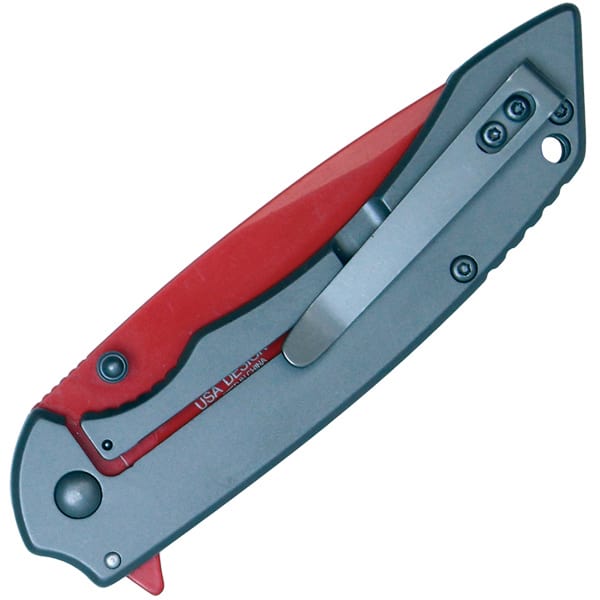
Brainstorm Security Shop

For Orders Over $199

On Any Of Our Products

Details On Refund Page
When you’re selecting your first pocket knife, it’s crucial to consider not just the look but also the functionality and the fit in your hand of pocket knifes. You’ll want to choose one that feels comfortable and secure, a tool you can rely on, whether for everyday tasks or unexpected situations. But how do you know if you’re making the right choice? What features should you look for, and what common pitfalls should you avoid? In the next sections, we’ll explore these questions, ensuring that you have all the information you need to make an informed decision. Curiosity piqued? Let’s find out together how to turn a simple buying decision into an art form.
Choosing the right pocket knife depends largely on your intended use. Whether you’re planning a camping trip, need a tool for everyday tasks, or something for specialized work, understanding the different knife styles and blade materials is crucial.
Let’s start with knife styles. You’ve got options like the traditional folding knife, which usually holds one to two blades and fits easily into your pocket, or the multi-tool that includes various gadgets aside from a knife—perfect for those who like a bit of versatility. Each style serves different purposes, so think about what you’ll mostly use it for.
Now, onto blade materials. Stainless steel is typically rust-resistant and maintains a sharp edge, making it ideal for general use. If you’re looking for something that can take and hold an incredibly sharp edge, consider high-carbon steel. However, it requires more maintenance as it’s prone to corrosion. Some newer blades combine both elements, offering durability and reduced maintenance.
When selecting your knife, consider the handle as well. Material like wood, metal, or synthetic can affect the grip and overall feel.

Before using your pocket knife, it’s crucial to understand the basics of knife safety to prevent injuries. You’ve got to be aware of the knife laws in your area—these can vary widely depending on where you are. Check your local regulations to ensure you’re not only carrying your knife legally but also using it within the bounds of the law.
It’s also essential to consider emergency preparedness when handling a pocket knife. Always have a first aid kit accessible in case of an accident. You should know basic first aid procedures in case you or someone else gets cut. Knowing how to respond quickly and efficiently can make a significant difference in the severity of an injury.
Remember, your pocket knife is a tool, not a toy. Treat it with respect and always focus on what you’re doing when you use it. Distractions can lead to accidents.
Ensure you’re in a safe environment where you can concentrate, and make sure others around you’re aware that you’re using a sharp tool.
Mastering the basic handling techniques of your pocket knife ensures you’re both safe and efficient.
You’ll need to familiarize yourself with the proper grip and hand position, learn the safe methods for opening and closing the knife, and understand how to maintain the blade.
Each step is crucial for optimizing the utility and longevity of your knife.
When handling a pocket knife, your grip and hand position are crucial for safe and effective use. It’s vital to choose a knife with an ergonomic design that comfortably fits your hand, reducing the risk of strain or injury.
The handle should allow you to maintain a firm and steady grip that maximizes hand strength without forcing your joints into awkward positions.
Hold the knife in a way that feels natural and balanced. Your thumb should rest lightly along one side of the handle, giving you control and stability.
The rest of your fingers should curl around the opposite side, securing the knife without squeezing too tightly. This position prevents slipping and allows you to maneuver the knife with precision.
To safely operate a pocket knife, start by familiarizing yourself with its opening and closing mechanisms. Understand where the blade release is located and how the locking mechanisms function. This knowledge isn’t just technical; it’s crucial for preventing injuries.
When you’re ready to open the knife, ensure your fingers are clear of the blade’s path. Locate the blade release—often a small lever or button—and gently press it while smoothly opening the blade with your other hand. Some knives feature a thumb stud or hole on the blade for easier one-handed opening. Always open the knife away from your body to maintain safety.
Closing the knife is just as important. Hold the handle firmly while ensuring no part of your hand obstructs the blade’s path as it folds back into the handle. Press or slide the blade release to unlock the blade, then carefully fold it back into the closed position.
Be mindful of locking mechanisms that click or snap into place, confirming the blade is securely stowed.
How to Use Pocket Knives
Maintenance and Blade Care
After mastering the basics of safely opening and closing your pocket knife, it’s essential to focus on maintaining its blade to ensure longevity and optimal performance.
Proper care prevents damage and preserves the functionality of your knife, regardless of the blade materials.
Here are three key steps to keep your knife in top condition:
Use soapy water and a soft brush to gently scrub the blade, then dry it thoroughly to avoid rust.
Regular cleaning is crucial for rust prevention.
This not only eases the opening and closing mechanism but also forms a barrier against moisture and dirt, further aiding in rust prevention.
A knife sheath or pouch offers additional protection against environmental factors that can degrade blade materials.
Regular cleaning and maintenance of your pocket knife ensures it remains sharp, safe, and functional. Here are some practical cleaning techniques and maintenance tips to help you keep your knife in top condition.
Firstly, always clean your knife after use, especially if it’s been exposed to acidic substances or moisture. You’ll want to wash the blade with warm, soapy water, then thoroughly dry it to prevent rust.
Don’t forget to clean the handle, particularly if it has grooves or textures where dirt and grime can accumulate.
For maintenance, lubricate the folding mechanism and blade pivot points to ensure smooth operation. Use a light oil designed for knives; just a drop or two will do.
Apply the oil, then open and close the blade several times to distribute it evenly.
Occasionally, check the screws or rivets holding your knife together. These can loosen over time, so you might need to tighten them to ensure everything stays secure.
Be careful not to over-tighten, as this can strip the threads or damage the knife.

Now that your knife is clean, it’s crucial to keep it sharp; a dull blade can be more dangerous than a sharp one.
You’ll need to select the right sharpener—choices range from simple stones to advanced systems.
Once you’ve got the right tools, mastering the proper sharpening technique will ensure your knife cuts efficiently and safely.
Choosing the right sharpener is crucial for maintaining your pocket knife’s effectiveness and longevity. The variety of sharpeners available can be overwhelming, but it’s essential to find one that suits your knife’s needs and your handling comfort. Here are some key points to consider:

Why is mastering the proper sharpening technique essential for your pocket knife’s performance? Keeping your knife sharp isn’t just about ease of use; it’s about maintaining the tool’s integrity and functionality. A well-sharpened knife ensures precision in cutting, reduces the effort you need to exert, and minimizes the wear on the blade.
First, you’ve got to consider the blade angle—a critical aspect that varies with each knife. Typically, pocket knives work best with an angle between 10 to 15 degrees on each side. Stick to this range to maximize sharpness without compromising the blade’s strength.
When it comes to sharpening frequency, listen to your knife. Regular use typically demands more frequent sharpening. If you notice a visible dullness or the knife struggles with tasks that used to be easy, it’s time to sharpen.
For average use, sharpening your knife once every few months might suffice. However, if you’re using it more intensely, you might need to do it more frequently.
Use a sharpening stone or a specialized knife sharpener. Start with coarser grit to reshape the edge and finish with a finer grit to refine it. Keep your movements consistent and gentle to avoid any unevenness in the blade.
Pocket knives are incredibly versatile, serving as essential tools in many everyday tasks. Whether you’re a camper, hiker, or simply someone who likes being prepared for any situation, you’ll find countless uses for this compact tool.
Let’s dive into some of the key applications that make pocket knives indispensable.
It’s a fundamental piece of camping essentials and hiking gear.
Its tool versatility makes it invaluable for quick fixes and critical situations.
It’s also handy for cutting materials like thread or fabric when you’re crafting on the go.
Even the most reliable pocket knives can encounter issues, from dull blades to stiff joints. If you’re dealing with a dull blade, it’s essential to sharpen it regularly to maintain efficiency.
Blade misalignment and blade chipping can often result from improper grip or using the knife on unsuitable materials. Ensure you’re holding your knife correctly and using it as intended to prevent these problems.
Rust spots can compromise your knife’s functionality and aesthetics. To tackle rust, apply a gentle lubricant and cleaner designed for knives, then wipe down thoroughly.
If your knife suffers from lock failure or a faulty safety latch, it’s crucial to address these immediately to ensure your safety. These failures can typically be repaired by adjusting the tension or replacing the affected part.

You might also notice hinge wear or pocket clip issues after extensive use. Regular maintenance, including tightening screws and applying appropriate oil, can help mitigate these issues.
Lastly, ergonomic concerns are vital for comfort and effectiveness. If your knife doesn’t fit well in your hand or causes discomfort, consider using a model with a better-designed handle.
Always prioritize safety and functionality to keep your pocket knife in top condition.
When you’re not using your pocket knife, finding the right storage solution is crucial to maintain its condition and ensure safety. You want to avoid rust, damage, or accidents, and the right knife storage can make all the difference.
Here’s how you can store your knife effectively:
It’s a safe bet for humidity control and keeps your blade in top-notch condition.
Insert some silica gel packets for extra moisture control.
These options ensure that your knife is easy to reach and securely stowed when not in use. Always make sure the sheath fits snugly to avoid any movement that might dull the blade.

You can’t bring pocket knives onto airplanes due to TSA regulations prioritizing flight safety. They’ll likely be confiscated during security checks, so best leave them at home or pack them in checked luggage.
You’ll find that pocket knife regulations vary widely. Not all states have the same laws, so it’s crucial to check local statutes before carrying one to ensure you’re not breaking any laws.
You’ll find that pocket knives made with sustainable materials support eco-friendly practices by reducing waste. Their durability and reusability lessen the environmental impact compared to disposable alternatives. Always choose ones crafted sustainably.

When gifting pocket knives, you should consider cultural significance and responsible gifting. Ensure it’s appropriate for the recipient’s culture and legally permissible, emphasizing thoughtfulness and the potential practical uses of the gift.
Yes, you can personalize pocket knives through various customization options including engraving techniques. You’ll choose the style, materials, and what’s engraved to make it uniquely yours or a special gift for someone.
Now that you’ve got the hang of choosing and using your pocket knife, always prioritize safety and maintenance. Keep it clean, sharp, and stored properly when not in use. Remember, a well-maintained knife isn’t just a tool; it’s a reliable companion for your adventures or daily tasks. So, handle it with care, respect its capabilities, and it’ll serve you well. Happy cutting, and stay safe as you explore all the practical applications of your trusty pocket knife!

Brainstorm Security Shop
1867 Caravan Trail
Ste 105
Jacksonville, FL 32216
Call us toll free: (800) 859-5566